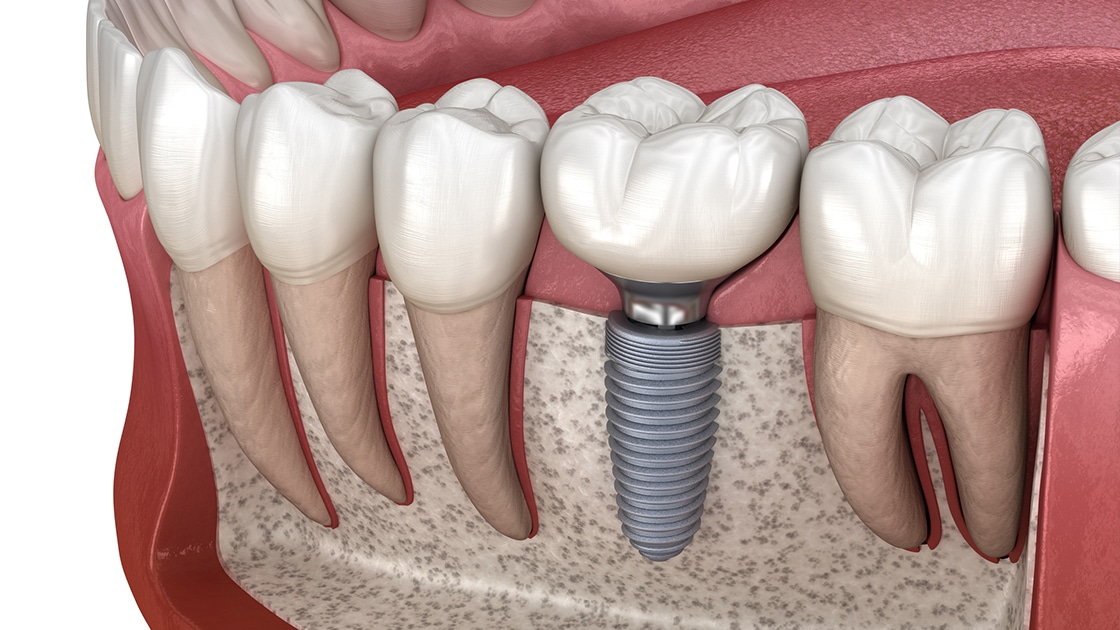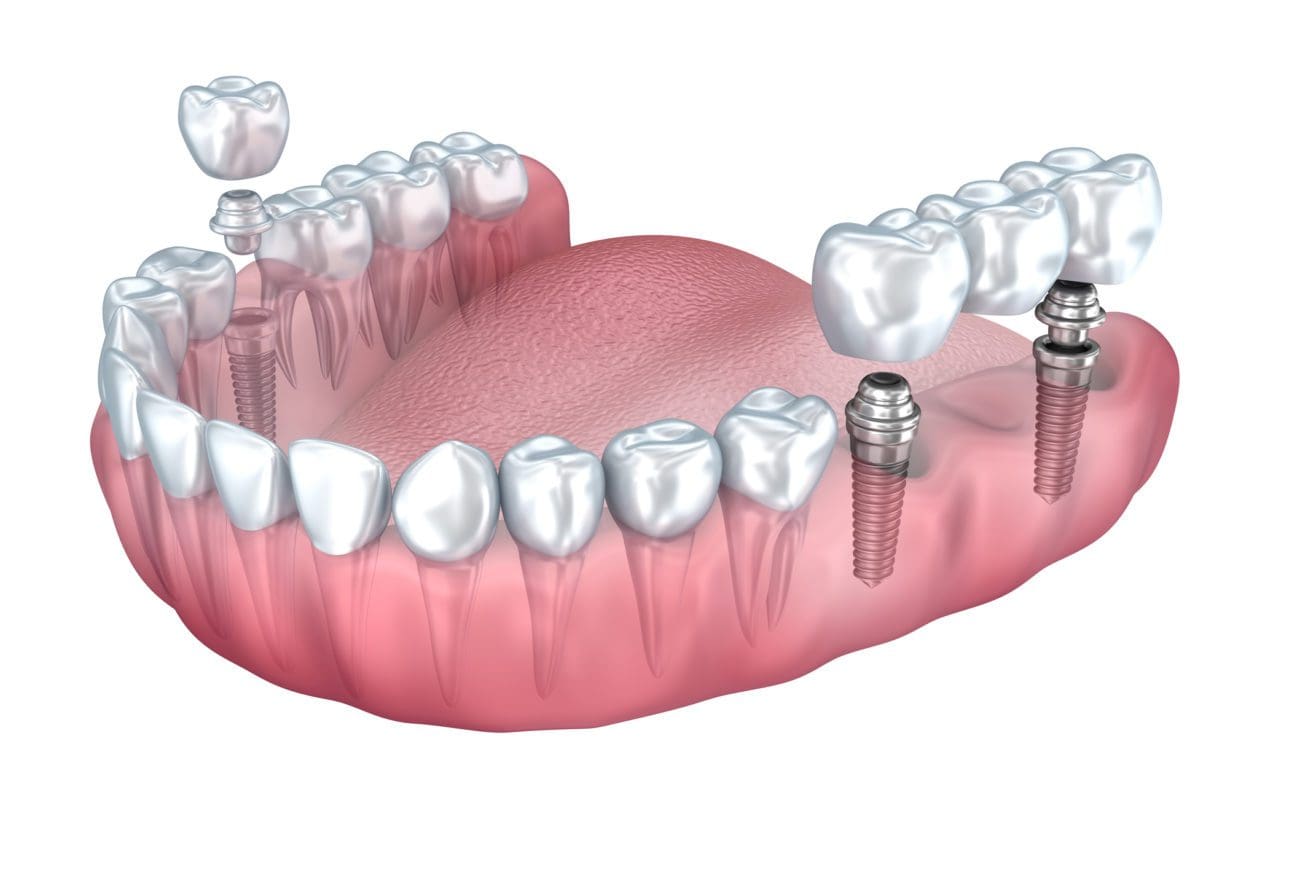9 Easy Facts About Dental Sense Shown
Table of ContentsThe Only Guide to Dental SenseThe Best Strategy To Use For Dental SenseDental Sense - The FactsDental Sense for Beginners
are clinical devices operatively dental implanted right into the jaw to recover an individual's capability to chew or their appearance. They give support for synthetic (fake) teeth, such as crowns, bridges, or dentures. When a tooth is lost as a result of injury or condition, a person can experience problems such as rapid bone loss, defective speech, or modifications to chewing patterns that result in discomfort.Oral dental implant systems include a dental implant body and oral implant joint and might additionally consist of an abutment fixation screw. Wisdom tooth cavity. The oral implant body is surgically inserted in the jawbone in location of the tooth's origin. The dental implant joint is typically connected to the dental implant body by the joint addiction screw and extends through gum tissues right into the mouth to sustain the affixed synthetic teeth
(https://www.kickstarter.com/profile/dentalsense1/about)Structure of The Oral Implant System picking dental implants, speak to your oral company concerning the prospective benefits and risks, and whether you are a prospect for the treatment. Points to take into consideration: Your overall health is an important consider figuring out whether you are a good candidate for oral implants, the length of time it will take to heal, and the length of time the dental implant might stay in place.
Cigarette smoking might influence the recovery process and decrease the long-lasting success of the dental implant. The recovery procedure for the implant body might take a number of months or longer, throughout which time you generally have a short-term abutment instead of the tooth. the dental implant procedure: Meticulously follow the dental health guidelines offered to you by your oral provider.
How Dental Sense can Save You Time, Stress, and Money.
Implant failing can lead to the demand for one more operation to repair or change the dental implant system. Brings back the capability to eat Restores aesthetic appearance Aids keep the jawbone from shrinking due to bone loss Preserves the wellness of the surrounding bone and gums Assists keep nearby (nearby) teeth steady Boosts high quality of life Damages to surrounding all-natural teeth throughout implant placement Injury to the surrounding tissues throughout surgery, such as sinus perforation Injury during surgical procedure (for instance, crack of bordering jawbone) Inadequate function, such as seeming like the teeth do not bite with each other normally A feeling that the tooth is loosened or turning in location resulting from a joint screw loosening up Implant body failure (looseness of the implant body) as a result of systemic infection, which may be most likely in people with unchecked diabetes due to regional infection in bone and gum tissues sustaining the implant body because of postponed recovery, which my link might be more probable in patients who smoke Trouble cleaning up the gum tissues around the dental implant, causing bad oral hygiene Unattended periodontal illness Post-surgical pins and needles because of nerve impingement or damage Always notify health and wellness care service providers and imaging specialists that you have oral implants prior to any kind of magnetic vibration imaging (MRI) or x-ray procedures.
FDA is not knowledgeable about any kind of unfavorable events reported for MRI or x-ray procedures with oral implants. Oral implants systems are typically constructed from products that adhere to global agreement criteria of the International Organization for Standardization (ISO) or ASTM International. These criteria have details of what makes a risk-free material.

An oral implant is a structure that changes a missing out on tooth. With screw-like devices, the specialist inserts an implant into the jawbone, and it acts as a support for a man-made tooth, called a crown. A tool called an abutment attaches the synthetic tooth to the oral implant. The crown is tailor-made to fit the person's mouth and match the shade of their teeth.
The Ultimate Guide To Dental Sense
Some individuals are not eligible for dental implant surgery. It is for dental doctors to run on individuals with: intense illnessuncontrollable metabolic diseasebone or soft cells condition or infectionIf these concerns are dealt with, a person can have the surgical treatment. In, dental doctors avoid operating on individuals with: If people with any of the above go through oral implant surgical treatment, there is a higher danger of the implant failing.

Dental implant surgery is a tailored process. It's not the same for everybody. But the complying with gives a general overview of what you can anticipate your dental practitioner, dental cosmetic surgeon, periodontist or prosthodontist to do: Position the implant surgically. Provide you time to recover. Affix the blog post and last crown, bridge or denture.
Next off, your surgeon will meticulously position the oral implant right into your jaw. Lastly, your doctor will reposition your gum tissues and shut the laceration with stitches. If your dental implant is near the front of your mouth, your dental expert will certainly make a momentary tooth for you to wear until you heal. This way, you won't have a gap in your smile while you recoup.
Indicators on Dental Sense You Need To Know
During the recovery stage, your jawbone must fuse to the dental implant. This process can take anywhere from 3 to nine months.
As soon as your implant heals, your dentist can attach the abutment (small port message) and your last reconstruction (crown, bridge or denture). This generally takes regarding one hour to complete and may need a second minor surgical treatment. You should not really feel any pain during your oral implant procedure since your service provider will utilize medicine to numb your gums.